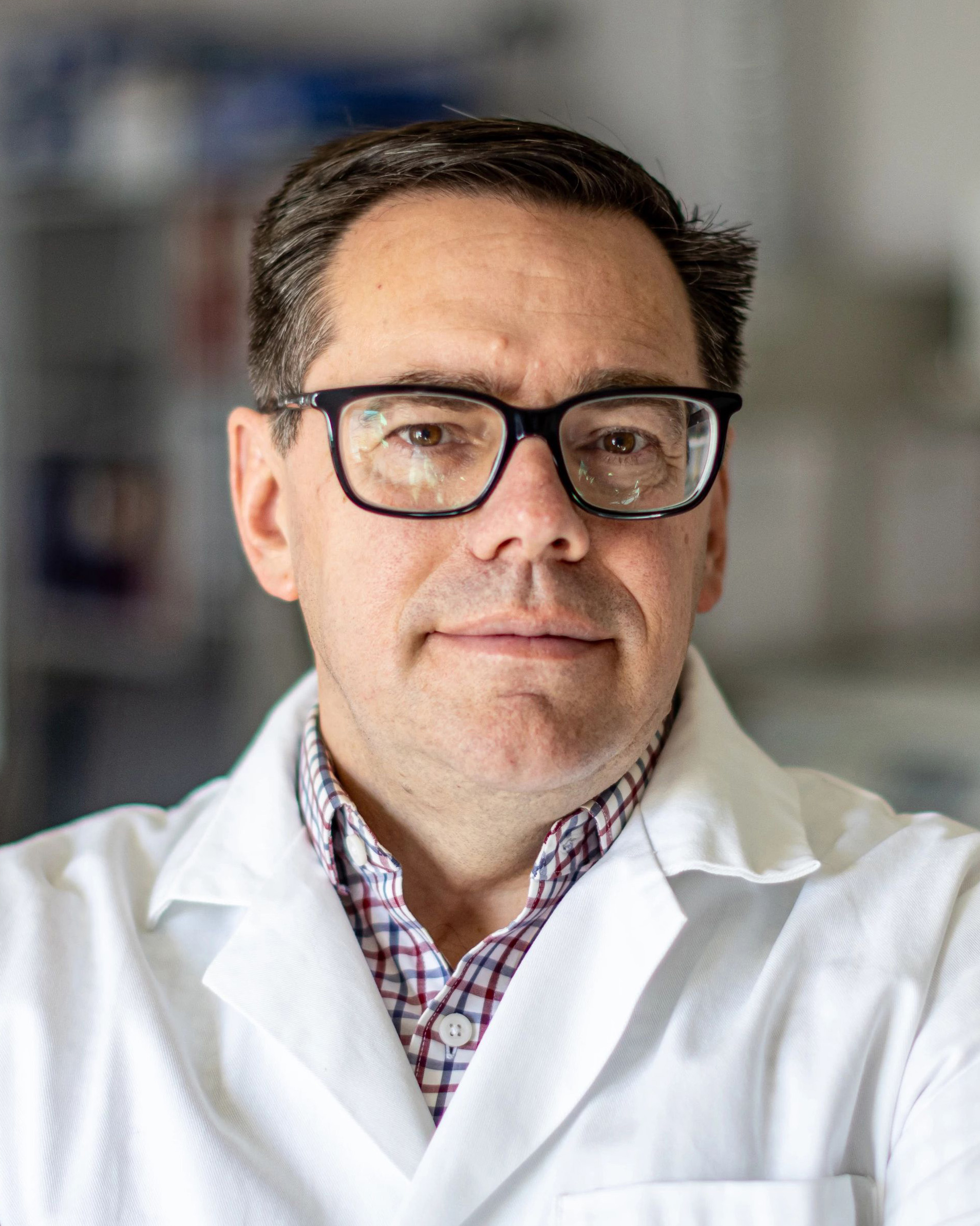Voices of U of U Health
Breakthroughs in Gene Therapy Are Changing Lives
Gene therapy, once the stuff of science fiction, is rapidly expanding and expected to transform many areas of medicine. This is especially true for rare diseases, which collectively affect as many as 30 million people in the U.S. Half of them are children.
Utah Leads the Way
By the end of 2023, 10 FDA-approved gene therapies were available. Based on existing development programs, 30-50 additional gene therapies are expected to be approved by 2030.
At the Utah Program for Inherited Neuromuscular Disorders (UPIN), we’re bringing these therapies to life for children with neuromuscular disorders. This close collaboration between University of Utah scientists and clinicians benefits patients—young and old—every day.
The U has been a leader in genetics since the 1940s, when Fayette Stephens first identified Utah families with genetic disorders and closely described their clinical features and line of inheritance. These families became the basis of genetic mapping studies developed at the U between the 1980s and early 2000s. The studies led to the discovery of many genes, including breast and colon cancer genes.
More recently, the U has become a leader in genomics. We deliver rapid whole genome sequencing to critical infants in newborn ICUs through the Center for Genomic Medicine and Personalized Medicine program at Primary Children’s Hospital.

Bringing Best Clinical Trials to Utah
About a decade ago, my colleagues and I realized that a growing number of genetic therapies were coming into clinical trials. At the time, no treatments were available for most of our patients. Many of them had rare genetic disorders.
We were committed to finding the most promising clinical trials for genetic therapies and bringing them to Utah. In 2015, the Utah Program for Inherited Neuromuscular Disorders (UPIN) was born. Our first clinical trials included various strategies to deliver genetic therapy for spinal muscular atrophy (SMA) and Duchenne muscular dystrophy (DMD). Today, both disorders have FDA-approved gene therapies available.
In collaboration with the Utah Department of Health, Utah became the first state to implement statewide newborn screening for SMA in 2018. The screening ensures that all infants with SMA are diagnosed before symptoms arise.
Now, six years later, a disorder that was once the leading cause of neonatal death is a treatable disorder. Most children are treated before three weeks of age. Genetic diagnosis is more accessible than ever, and tools to manipulate genes in a patient are rapidly evolving.
Getting Treatment to Patients Faster
At UPIN, we like to say that patients inform our scientific research and research informs care for our patients. Our work includes translational research in the lab and identifying promising new clinical trials.
The Orphan Disease Center recently awarded a grant to our lab for a pilot study that uses ADAR to correct mutations in the gene causing collagen VI related muscular dystrophy. ADAR is an RNA editor first discovered by University of Utah biochemist Brenda Bass, PhD.

We have ongoing gene therapy trials for DMD and are working with multiple pharmaceutical companies on novel gene therapy clinical trials for Facioscapulohumeral Muscular Dystrophy (FSHD), Limb-Girdle Muscular Dystrophy (LGMD), Friedreich's ataxia, and more.
Based on our experience with these clinical trials, our team has developed a unique expertise in gene therapy and its potential complications. When drugs get approved by the FDA for commercial use, we are poised to deliver them rapidly and safely to patients.
In the case of SMA, we rapidly transitioned from gene therapy in a clinical trial to gene therapy in the clinic—treating our first SMA patient just six weeks after FDA approval.
Gene therapy will likely go beyond treating rare disorders and benefit a wider population. We hope to see more clinical and translational research at the University of Utah. We want to broaden our expertise in gene therapy across a broad range of specialists.
Building Relationships with Patients
Our clinical trial patients come from all over the Mountain West and as far away as North Carolina. The majority of UPIN patients are children, but we also care for adults with childhood-onset disorders such as FSHD, LGMD, and Charcot-Marie-Tooth (CMT) disease.
By building long-term relationships with patients and their families, we are always prepared to rapidly take advantage of gene therapies when they become available.
To help nurture those relationships, we gather as a community at our annual UPIN family day event. We use this time to increase awareness of these disorders. We share information about clinical trials on the horizon and drugs that have been approved by the FDA.

Overcoming Challenges
Genetic medicine is poised to rapidly care for patients, but many challenges still remain.
The cost of treatments makes it difficult to fully implement gene therapy. The SMA gene therapy Zolgensma currently costs $2 million for a one-time infusion. While this is typically paid by insurance, it can create financial burdens on the health care system.
Another challenge is getting earlier access to treatment. For many genetic disorders, the earlier the treatment, the more effective it is likely to be. For children with SMA, delaying treatment by even a few days can leave an infant with lifelong complications.
As more genetic therapies come to fruition, we will need to adapt programs to provide diagnosis early—when treatment is most effective.
Future of Gene Therapy at the U
Our patient population is eager to take advantage of the next generation of genetic therapies. More gene therapy programs are needed—for research and clinical care. Our goal is to create a Center for Gene Therapy that will have the potential to bring more skilled clinicians and researchers to our campus to change lives and lead genetic medicine into the future.
